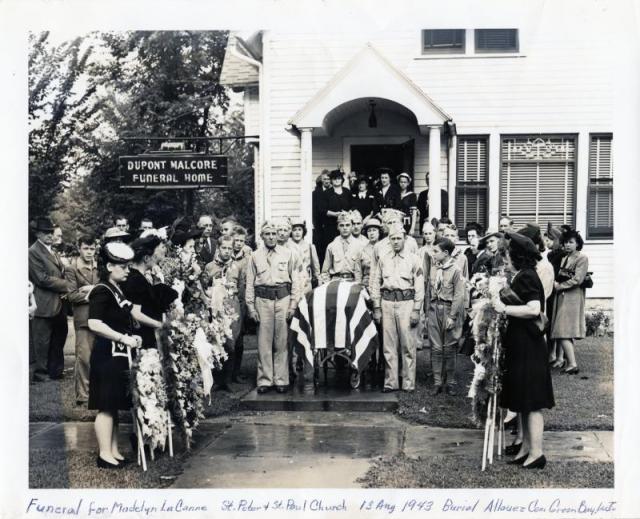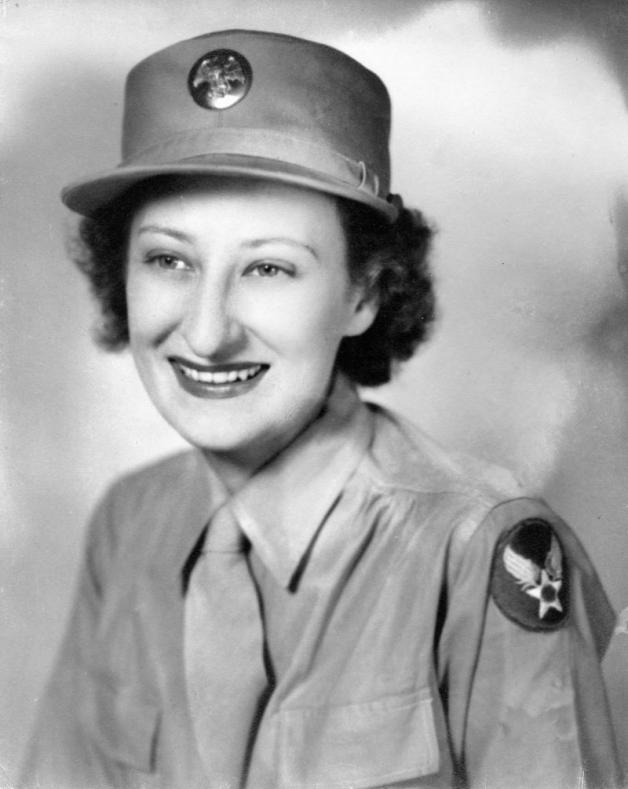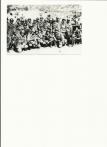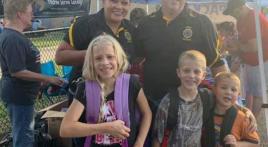Women's History Month is important as it highlights the achievement of women, both past and present, who have helped build and mold this country. I bring you the story of our post namesake, Madelyn LaCanne, Women’s Army Corps (WAC), WWII, who contributed to the rich legacy of our country through service in its armed forces.
Born in Green Bay, Wis., Madelyn enlisted in the service on April 5, 1943, in Milwaukee. She received her basic training at Fort Oglethorpe, Georgia, and then was transferred to Ellington Field, Texas. While there, she was assigned to Auxiliary 788 Headquarters, WAC. While serving at Ellington Field her life was cut short by a tragic accident. Accounts in the post records state: “according to her sister-in-law, Mrs. Kenneth Barrette of Green Bay, Wis., Madelyn was hurled against a building on the air field during a hurricane. She died of a brain hemorrhage.” Madelyn was the first woman from Green Bay to die in the service of her country. That always seems to be such a stark statement. It begs the question “what happened?”
WWII was well underway in July 1943. Ellington Field, on the outskirts of Houston, was the site for advanced flight training for bomber pilots. Initial plans called for the training of 2,800 bomber pilots per year at Ellington Field, or about 10 percent of the total number of pilots trained throughout the United States. Along with various other Bombardier cadets and Navigator School cadets, more than 65 women who served in the Women's Army Corps were also stationed at Ellington Field. The WACs worked in noncombat Army jobs in order to free men for combat duty. "By taking over an Army job behind the lines, she frees a fighting man to join his fellow soldiers on the road to Victory," stated WAC director Col. Oveta Culp Hobby.
The War Department was very concerned about secrecy because in the area were contributors to the war effort, the Humble Oil refinery and the Shell Deer Park refinery, the two top producers of high-grade aviation fuel for the military. They were also the two biggest producers of one of the main ingredients for TNT for the bombs. Shipyards in Galveston and Beaumont-Port Arthur were launching Liberty ships as fast as they could build them, to carry supplies to the war fronts, but many of the ships were sunk by German U-boats waiting for them in the Gulf of Mexico. The fear of an enemy attack on the U.S. mainland was so real that refineries and chemical plants were protected by batteries of anti-aircraft guns.
Amid all of this activity, on the 26th of July, 1943, an ominous storm was brewing over the extreme southeastern United States and the eastern Gulf of Mexico. Early on July 27 the storm, now referred to as “the Surprise Hurricane,” strengthened into a Category 2 hurricane on the present-day Saffir–Simpson hurricane wind scale. Today there would be up-to-the-minute reporting on any change in the path of the storm or its intensity. Unfortunately, in 1943 satellite imagery was 20 years away ... radar over a decade. Aircraft reconnaissance was soon to be born, but not yet. None of the modern-day warning systems for storms of this magnitude were invented yet. Furthermore, the nation was rightfully preoccupied with the events of the second world war. All news underwent censorship. Because of German U-boat activity expected in the Gulf of Mexico, all ships' radio broadcasts were silenced. This included any reports of weather ... even adverse weather such as the hurricane. Weather Bureau forecasters in 1943 relied almost exclusively on reports from ships at sea and land-based weather offices in cities and airports for the data used to issue storm warnings. Advisories had to be cleared through the Weather Bureau office in New Orleans, causing them to be released hours late, and the advisories contained no forecast information, which would have allowed for preparation before the storm struck. With all those constraints, one can see why the hurricane that hit the Houston-Ellington Field area on July 27 came without adequate warning to those residents who inhabited the area.
Newspaper accounts of the storm describe it as the "worst since 1915." The 1915 hurricane tested the famous Galveston seawall and killed over 275 people. The hurricane killed a reported 19 people, injured hundreds and caused significant property damage through much of the metropolitan area. In the Houston area, all three of the area's radio stations were knocked off the air after losing power. Without radio, the greater Houston area became deaf to any other warnings. Earlier much of the telephone service and power had already failed. Many people in downtown were trapped where they were and took shelter in buildings where they worked. Many took shelter in the City Auditorium and the Coliseum along with the National Guard units.
At Ellington Field, located about 16 miles southeast of Houston, hundreds of air cadets marched out with their trouser legs rolled up to join the soldiers on the flight ramp in staking down the planes that hadn’t been flown out in the threat of the hurricane. As the winds started to increase to hurricane force, cadets and soldiers held onto the wings of the planes to keep them from going airborne. At times, some of them were working in water hip-deep. Wind gusts as high as 132 mph were recorded by the wind anemometer located on top of one of the hangers, just before it blew away. Not only the wind recorder, but the top of the hanger it was attached to blew away as well. Many air cadets and soldiers were injured during the storm. At least 22 of the cadets and soldiers ended up in the base hospital. At least five planes were lost.
After the hurricane, the news reports of the hurricane and its aftermath were heavily censored by the government due to national security. The loss of production of war materials couldn’t be found out by the Axis powers. This was 1943 and the tides in both the Atlantic and Pacific theaters of war were finally starting to turn. There was a report that the FBI shut down the telegraph office in La Porte because someone had sent a telegram out of the state informing someone of the damages from the hurricane. The only news of the hurricane was published in the two states that were affected, Texas and Louisiana. After this hurricane, never again were advisories censored from the public. War or no war, the risk to human life is too great. This was a lesson learned.
We have no firsthand accounts, so it’s impossible to know the exact whereabouts of Madelyn LaCanne on the day of the hurricane. We know she was at Ellington Field. We know that with no warning of the hurricane’s approach it must have been chaotic. We know, sadly, from her sister-in-law’s account: “she was hurled against a building on the airfield and suffered a brain hemorrhage.” Her obituary tells us she died in the station hospital Sunday evening, Aug. 8, 1943, from injuries sustained in the hurricane. Tragically, it was just 16 days past her 31st birthday.
Madelyn’s remains were brought back to Wisconsin. Fern LeMere, a fellow WAC, served as her escort. Fern also served as a pallbearer and would become a member of American Legion Post 539. On Friday, Aug. 13, 1943, the first military funeral for a WAC held in Wisconsin was conducted at SS Peter and Paul church in Green Bay, with Malcore Funeral home officiating. She received full military honors; members of Company H, Wisconsin State Guard served as pallbearers. Madelyn is interred at Allouez Catholic Cemetery in Green Bay.
We salute Madelyn and all the women who served in any capacity to support our country during WWII. They are many, and they served as trailblazers for all of us who came after. We are forever in your debt.
Story by: Susan Zarnoth, historian, Madelynn LaCanne American Legion Post 539
Research sources:
Bell, J. (2015, August 8). Hurricane Series: Surprise Hurricane of 1943. Retrieved April 15, 2016, from Houston Public Media: https://www.houstonpublicmedia.org/articles/news/2007/05/31/6878/hurrica...
Lew Fincher, B. R. (n.d.). 1943 Surprise Hurricane. Retrieved April 15, 2016, from NOAA History: http://www.history.noaa.gov/stories_tales/surprise.html
1943 Surprise Hurricane. (n.d.). Retrieved April 15, 2016, from Wikipedia: https://en.wikipedia.org/wiki/1943_Surprise_Hurricane
Ellington Field Joint Reserve Base. (n.d.). Retrieved April 15, 2016, from Wikipedia: https://en.wikipedia.org/wiki/Ellington_Field_Joint_Reserve_Base
The First Military Funeral for a WAC held in Wisconsin. (1943, August 14). Green Bay Press Gazette. Green Bay, Wisconsin, United States of America.





